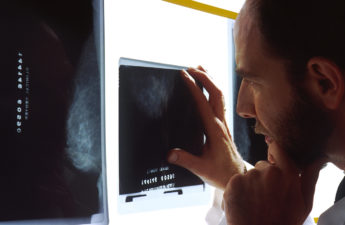
Maisam Najafizada, Memorial University of Newfoundland; Arifur Rahman, Memorial University of Newfoundland, and Katie Oxford, Memorial University of Newfoundland
In 2011, Dr. Kate Granger, a British geriatrician was diagnosed with cancer and her subsequent hospital stays and visits began. As a care provider, she noticed something simple, yet significant, that was often missed by the hospital staff. When staff showed up with updates on her illness, they weren’t always introducing themselves.
One interaction in particular left her scarred:
“And this junior doctor came to see me and just sat in the chair by my bed. He didn’t introduce himself. He just looked out of the window and said: ‘I’m really sorry but your cancer’s spread.’ No checking what I knew already, or whether I wanted someone with me. He couldn’t wait to get out of the room. … It was just awful. He went and I was just left.”
In 2013, she and her husband started a social media campaign with the hashtag #HelloMyNameIs. The idea was for health-care providers to introduce themselves each time they visited a patient.
Sadly, Dr. Granger passed away on 23 July 2016 at age 34, but she but she has been remembered every year on the same day, as care practitioners and hospitals share #HelloMyNameIs posts.
As researchers studying patient-centred care in Canada, we would like to describe what patient-centred care looks like. Professionalization has created a distance between providers and patients, yet a simple introduction can be a good start towards a truly patient-centred approach to health services.

Resonated widely
The #HelloMyNameIs campaign was quickly implemented by more than 90 health organizations in the United Kingdom, including National Health Service Trusts, which profiled both patients and staff introducing themselves. Celebrities, politicians global hospitals and diverse health-care providers including surgeons and porters pledged support. The fact that it has resonated so widely is evidence of a recognized need for greater patient-centred care.
Medical researcher Moira Stewart argues, “the patient should be the judge of patient-centred care” which is about “the indivisible whole of a healing relationship.” Respecting the values and preferences of patients, engaging them in the process of care and involving them in their own treatment is part of patient-centred care. But at the core is the significance of respecting their dignity as humans.
In Canada, Lakeridge Health, an organisation of five hospitals east of the Greater Toronto Area, initiated a patient-driven care project in 2012.
The hospitals introduced five tactics to encourage interprofessional collaboration and recognize caring actions, invite patients to share their personal stories with care providers and establish a standard for interacting with patients.
The latter was shorthanded to the acronym NOD, for the three things care practitioners should always share: their name, occupation, and what they are going to do.
Dr. Lisa Shiozaki and colleagues from Lakeridge Health evaluated this patient-driven care project. They surveyed 150 individuals — 75 per cent patients and 25 per cent family members — before the project started and two years afterwards.
They found patients and their families or caregivers reported improved experiences of care after the project. More of them experienced respect and dignity in the care provided (96.8 per cent, up from 94.2 per cent) and more of them were able to find someone on the hospital staff to talk about their concerns (92.2 per cent up from from 85.4 per cent).
The percentage of patients or family members who felt included in decisions about their care also increased to 94.2 per cent, from 88 per cent.
Objectivity and emotional detachment
There are many factors contributing to a lack of patient-centred care, but an important factor is professionalization, the process through which an occupation becomes a profession. As can be seen in many fields, professionalization entails systematic education and training for entrants, licensing and a code of ethics and the creation of professional associations.
Sociologists have studied how professionalization acts as a tool through which the members of a group gain status and privileges. In medicine, power dynamics are often at play which exacerbate small nuances between a patient who seeks advice or treatment from a professional care provider.
Doctors have traditionally been schooled to remain detached from their own emotions and those of their patients — to provide better clinical care. However, research shows that doctors who bury or deny their feelings altogether can be susceptible to burnout.
In the process of being objective and focusing on diseases, health-care providers may forget that they are treating human beings, not just diseases — or that they themselves are humans, not only care practitioners.
Humanization
Research suggests that a patient who seeks medical care is rarely seeking only technically competent services but is typically also trying to seek emotional support.
The solution to these problems does not lie in de-professionalization, but in humanization and practical support for care practitioners to find sustainable and appropriate ways to integrate empathy into efforts to engage patients.
Consistent introductions by health-care professionals would reduce the professional gap between providers and patients, and can help create an atmosphere of respect which may be crucial to a patient who is vulnerable and in need of emotional support.
Maisam Najafizada, Assistant Professor of Population Health Policy, Memorial University of Newfoundland; Arifur Rahman, PhD student, Faculty of Medicine, Memorial University of Newfoundland, and Katie Oxford, MD candidate, Memorial University of Newfoundland
This article is republished from The Conversation under a Creative Commons license. Read the original article.


